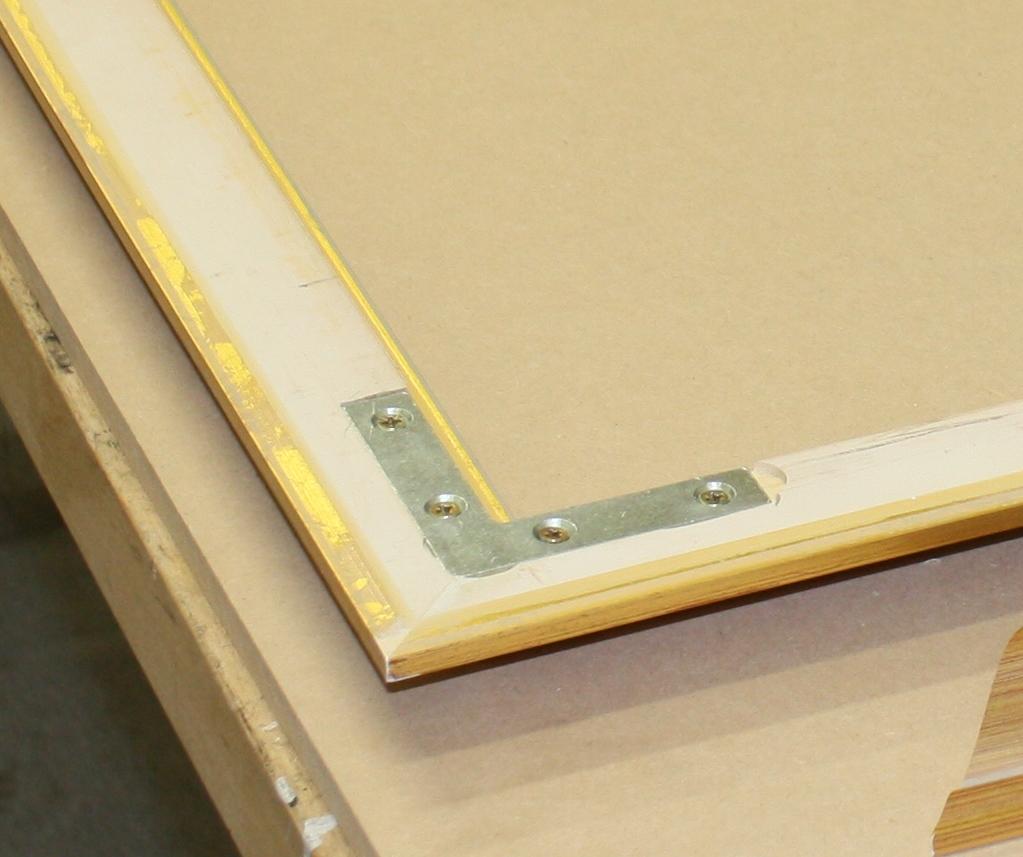12 Apr 2017
Ready for our pop-up museum in Lewisham, HLF Endeavour conservation intern Liza Nathan makes a new frame for a replica painting of Stubbs' Dingo
I am currently an intern in frames conservation on an HLF-funded internship. I did a postgraduate diploma in conservation at City and Guilds of London Art School. When I was studying I really enjoyed working with wood and gilded surfaces, so I thought that specialising in frames conservation would be perfect for me! I have been at the museum since November and I have done lots of different treatments to learn about historic frames, but I had never made a frame from scratch.
Last year, Anna Don made a recreation of a George Stubb’s painting, ‘Portrait of a Large Dog’ (Dingo), to investigate the methods and techniques used by the artist in the 18th Century. You can read more about it here. The replica painting is now on display in our pop-up museum in Lewisham (more about that here), but before it could go on display it needed to be framed. This was where I came in.
The first step I took was to measure the painting to make sure the frame was the right size. With the curators, we chose a reverse section gilt moulding and cut the lengths to size using a Morso; this ingenious piece of equipment consists of a sharp blade which cuts wood at a perfect 45 degree angle.
Once the pieces were cut and checked for size against the painting, they needed to be stuck together. This was done using wood glue at the mitres and these were then held together with a frame mitre clamp.
When the glue was dry, I added L-plates screwed to the back corners of the frame to provide further strength.

When making this frame, it was important to consider how the painting and frame related to one another, both aesthetically and historically. Since the painting is a replica, using an existing modern frame moulding was in-keeping with the painting. However, to me, the bright tone of the gilding and stripy appearance of its application did not match aesthetically with the painting. I wanted to tone the frame in order to lessen the brightness and linear pattern of the gilding. I carried out test toning on some samples and the end result consisted of an application of mica powders in shellac, which I dabbed on with a brush and then further toned with black wax and raw umber dry pigment.
My final step was to fit the painting in the frame. Plastazote foam was stuck along the rebate of the frame to prevent the painting from being scuffed. The painting was secured with mirror plates and a hardboard backboard was screwed onto the frame. This safely housed the painting.
Making this frame highlighted some of the main issues when housing a painting. How can I make the frame safe for the display of the painting, and does the frame relate well to the painting? You can see for yourself whether I have solved these issues in our pop-up museum display in Lewisham.